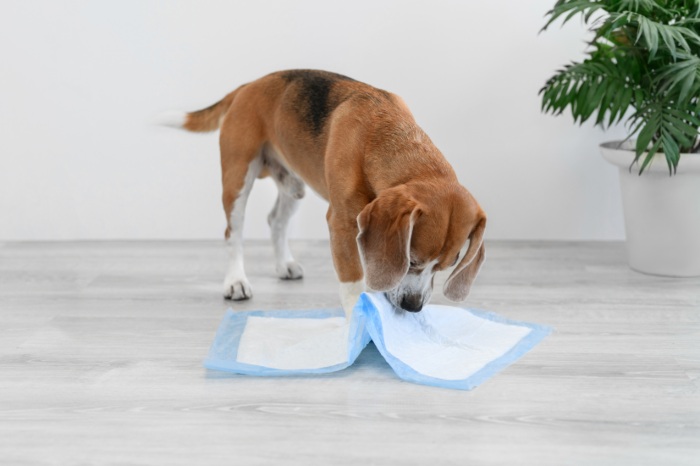How to Potty Train Your Puppy–The Fastest Way to Success
Tips on how to potty train your dog or puppy
Essential Tips on How to Potty Train Your Dog
Welcoming a new pup into your home is a heartwarming experience, laced with moments of unbridled joy and, of course, a few challenges. If there’s one hurdle that stands out to test the patience and perseverance of even the most seasoned dog lovers, it’s the adventure of potty training. With innumerable approaches and methodologies available, finding the fastest route to potty training success can feel like deciphering a complex puzzle. But don’t fret, because we’re here to help you find the best way to potty train your puppy.

Understanding Your Puppy’s Potty Habits
Before diving into different techniques and approaches, it’s essential to understand the basics of potty training. Puppies have small bladders and are not capable of holding their urine for long periods like adult dogs. On average, a puppy can hold their bladder for one hour per month of age. So, if your pup is two months old, they can only hold it in for about two hours.
Puppies usually need to go potty after waking up from a nap, after eating or drinking, and after playing or engaging in any physical activity. They also tend to have a specific spot or area where they prefer to relieve themselves.
Understanding these habits will help you anticipate when your pup needs to go potty and make it easier for you to train them.
Creating a Housetraining Schedule for Your Puppy
Just like with any education program, consistency and routine are key. Decide on a schedule that revolves around feeding times and gradually spaces out your puppy’s potty breaks as they develop better control. Consistently taking your puppy out first thing in the morning, after meals, before bedtime, and at regular intervals during the day minimizes accidents and reinforces a reliable routine.
Take Your Puppy Out Often
Puppies are bundles of energy with bladders to match their enthusiasm for exploration. Taking them out often, especially during waking hours, provides more opportunities for them to learn where to potty. Remember, their little bladders fill up quickly, so the duration between breaks should be frequent and initially dictated by their age in months.
Observation and Close Supervision
Being vigilant and observant of your puppy’s behavior can provide critical cues that a potty break is imminent. Watch for circling, sudden stops in play, or scratching at the door. If you notice these signs, whisk them outside to their designated potty spot without delay to help them associate that area with elimination.
Control the Diet
The type and timing of your puppy’s diet directly impact their potty habits. Feeding at consistent times helps regulate their digestive system. Choosing a high-quality diet with appropriate fiber content aids regular bowel movements. Monitoring and adjusting portion sizes to avoid overfeeding, especially with treats, also keeps accidents at bay.
Crate Training as an Aid to Potty Training
Crate training serves as a double-edged sword—it not only gives puppies a safe den to call their own but also teaches them to hold their business inside the crate, where they don’t want to soil their personal space. The key is to make sure the crate is properly sized, offering enough room to turn around but not large enough to have a bedroom and a bathroom.
Always Practice Positive Reinforcement
Use the power of positive reinforcement to communicate what you want your puppy to do. Every successful potty break should be celebrated with enthusiastic praise, playtime, or a treat. This immediate reward makes the connection between good behavior and positive outcomes crystal clear for your pup.
Recognize When Your Puppy Needs to Go Out
Beyond specific behaviors, you’ll also become attuned to your puppy’s natural rhythm. For example, most puppies need to go out soon after waking or after a vigorous play session. Recognizing these patterns enables you to take proactive steps toward successful potty training.
Leash-Up for Better Potty Practices
Using a leash for potty breaks helps your pup to stay in the designated area and prevents distractions that may interfere with the task at hand. It also conditions them to a consistent routine and helps you keep them safe when venturing outdoors for their business.
In the art of potty training, the key brushstrokes are patience, positivity, and persistence. Remember that every puppy is different, and while some might grasp the concept quickly, others may need a little more time and teaching. By creating a structured routine, being proactive, and fostering the right environment, you can guide your puppy on a successful potty training adventure and lay the foundation for a well-behaved and house-trained companion. With these guidelines, you’re well on your way to turning potty training into prideful bonding moments with your furry friend.
Visit Hilton Butler for More Potty Training Help in Dallas
For more in-depth guidance, support, and tips on navigating the potty training process or tackling any other puppy training challenges you might face, we invite you to visit Hilton Butler. Our mission is to make your pet parenting journey smoother and more joyful. Whether you’re looking for advice, training programs, or just a supportive community of fellow dog lovers, Hilton Butler is your go-to destination.
